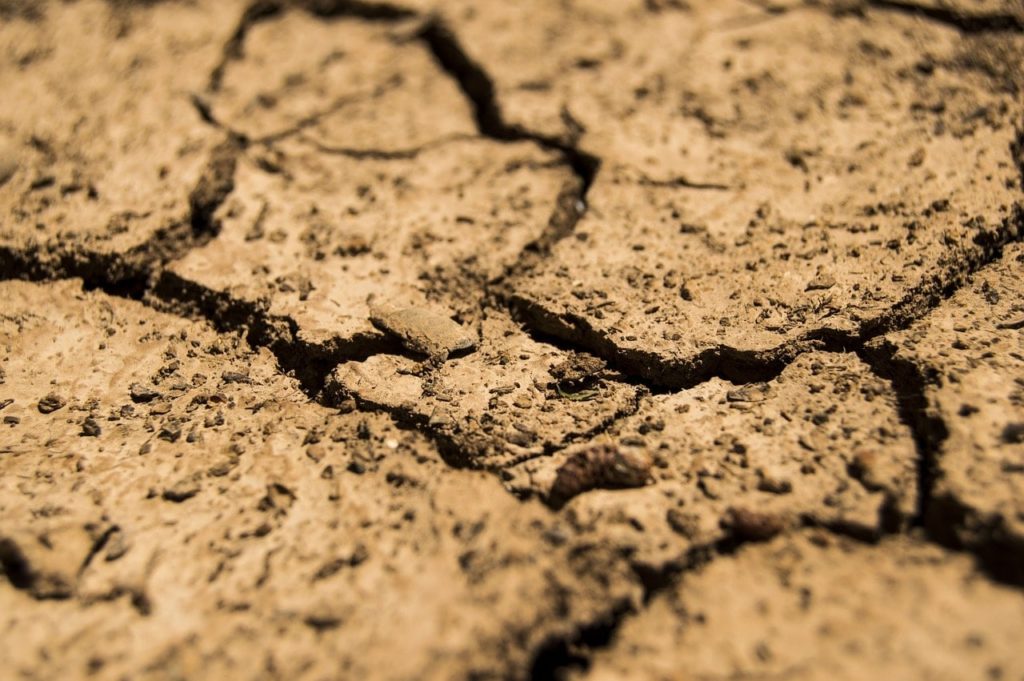Red Dirt Curse
Our red dirt is as much a part of Oklahoma’s make-up like oil fields, odd weather patterns, and historical cattle drives. But unfortunately, the iconic red dirt and lack of precipitation can lead to foundation damage.
 Oklahoma residents like the red dirt, but during droughts all of the clay-like tendencies surface. Red dirt is more reactive to water than many soils on the planet. Drying out causes contraction and the introduction of even a small amount of moisture causes expansion. This random and sometimes severe contraction and expansion have a direct effect on all foundations, causing stress and pressure in the soil, leading to cracks and heaving foundation walls and supports.
Oklahoma residents like the red dirt, but during droughts all of the clay-like tendencies surface. Red dirt is more reactive to water than many soils on the planet. Drying out causes contraction and the introduction of even a small amount of moisture causes expansion. This random and sometimes severe contraction and expansion have a direct effect on all foundations, causing stress and pressure in the soil, leading to cracks and heaving foundation walls and supports.
The state often experiences extreme droughts and with that comes extreme compression. Homeowners face more foundation problems in the summer compared to any other season. Here are some of the common issues related to red dirt:
- Expansive Nature: Red soil often contains a high clay content, which gives it an expansive nature. When exposed to moisture, clay soils tend to absorb water and expand, leading to an increase in volume. Conversely, during dry periods, clay soils shrink and contract. These cycles of expansion and contraction can exert pressure on the foundation, causing it to shift, crack, or settle unevenly.
- Poor Drainage: Red soil can have limited drainage capabilities. Clay soils have low permeability, meaning they absorb water slowly and retain it for extended periods. Excess water retained in the soil can saturate the foundation, leading to soil instability and potential damage.
- Differential Settlement: The expansive nature of red soil can result in differential settlement, where different areas of the foundation settle at different rates. This non-uniform movement can lead to uneven stress distribution, causing cracks, shifts, or tilting in the foundation.
- Swelling and Shrinkage: Red soil’s tendency to swell when wet and shrink when dry can result in a cyclical process that puts stress on the foundation. The repeated expansion and contraction can create movement and strain on the foundation, potentially leading to structural problems over time.
- Difficulty in Construction: Building on red soil can present challenges during construction. Excavation and grading processes may be more complicated due to the soil’s cohesion and stickiness. Additionally, proper foundation design and construction techniques, such as incorporating adequate drainage systems and implementing appropriate moisture control measures, become crucial to mitigate potential issues.
To address these challenges it is good to consult with the foundation specialists at Pierman Foundation Repair Services and schedule an inspection, and be on the lookout for symptoms of foundation damage.
Look Out for Symptoms of Foundation Damage
The first signs of foundation damage are cracks – wall cracks and floor cracks. Next up would be misaligned doors and windows. Just because your door isn’t closing all the way, doesn’t mean it was installed incorrectly, generally, there’s a larger problem. To avoid these problems during droughts, many homeowners try to water the perimeter of their homes to keep the soil from compressing. This method is not a prevention and not recommended, as overwatering with poor or little drainage can cause extensive issues on their own.
What Should You Do?
Should you have those cracks repaired and your foundation damage assessed? Yes! Ignoring issues will only help that hairline wall crack expand into a large, structural problem. Foundation repairs can be very expensive and the price will continue to rise as the problem gets larger. Always have any structural issue addressed in your home.



